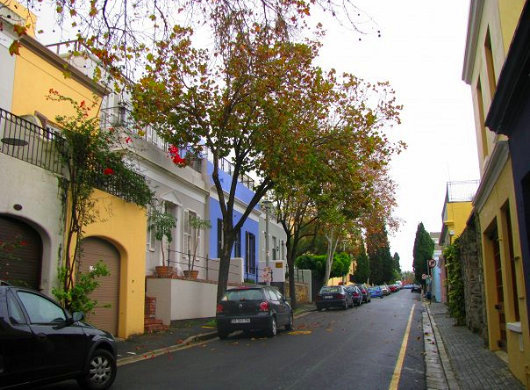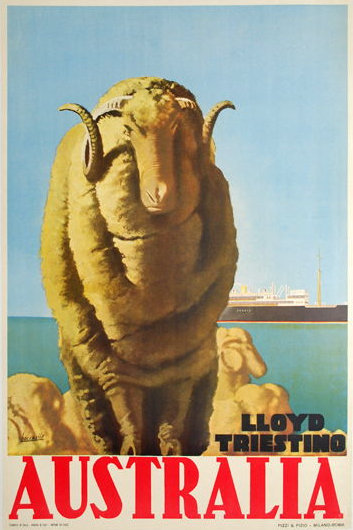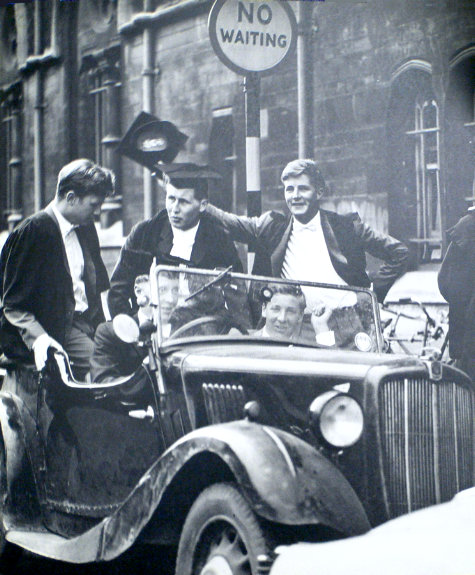World
About Andrew Cusack
 Writer, web designer, etc.; born in New York; educated in Argentina, Scotland, and South Africa; now based in London.
Writer, web designer, etc.; born in New York; educated in Argentina, Scotland, and South Africa; now based in London. read more
News
Blogs
Reviews & Periodicals
Arts & Design
World
France
Mitteleuropa
Knickerbockers
Argentina
The Levant
Africa
Cape of Good Hope
Netherlands
Scandinavia
Québec
India
Muscovy
Germany
Academica
Oranje in New York
The Prince & Princess of Orange Celebrate 400 Years of the Hudson
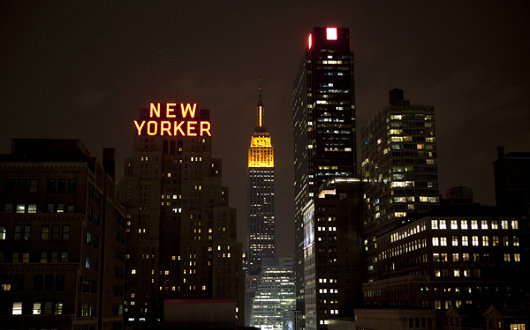
THE CONNECTIONS BETWEEN New York and the Netherlands go back far; back to the very beginning indeed, to 1609 when Henry Hudson, in the service of the Dutch, first set eyes on the greatest harbour of the Atlantic seaboard. The four-hundredth anniversary of that event brought the Prince and Princess of Orange, the heirs to the Dutch throne over to old New Amsterdam for the culmination of the year’s quadricentenary celebrations.
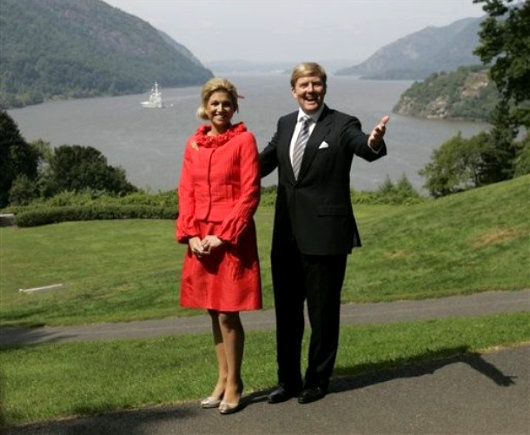
After their arrival in the Empire State, Prince Willem-Alexander and Princess Maxima sped straight up the Hudson Valley to West Point, the pearl of the river. The Kingdom of the Netherlands and the United States are official military allies, with at least 1,770 Dutch soldiers serving in Afghanistan, plus an undisclosed number of special forces from the Korps Commandotroepen. (more…)
David Kerr for Glasgow North East
 While the baggage-handler and much-celebrated hero of the Glasgow Airport attacks, Mr. John Smeaton QGM (“This is Glasgow; we’ll set aboot ye. … You’re no’ hitting the Polis mate, there’s nae chance.”) has announced he is going to contest the Glasgow North East by-election for some fringe electoral outfit, this blog is happy to report that there is already a perfectly laudable candidate who is seeking the privilege of serving the constituents of that district at Westminster.
While the baggage-handler and much-celebrated hero of the Glasgow Airport attacks, Mr. John Smeaton QGM (“This is Glasgow; we’ll set aboot ye. … You’re no’ hitting the Polis mate, there’s nae chance.”) has announced he is going to contest the Glasgow North East by-election for some fringe electoral outfit, this blog is happy to report that there is already a perfectly laudable candidate who is seeking the privilege of serving the constituents of that district at Westminster.
Mr. David Kerr, a Catholic graduate of the University of St Andrews and until recently a senior editor of BBC Scotland’s “Reporting Scotland” programme, is the Scottish Nationalist candidate for Glasgow North East. The Labourite newspapers have already set David Kerr as the target of their sleaze machine, first for a derogatory comment about Glasgow Caledonian University “not having a reputation to tarnish” made in a jocular spirit of inter-academic rivalry, then over a television investigation into the availability of weaponry in which Mr. Kerr was pictured with… well, weapons! (Oh, the horror! Vote Labour!)
Mr. Kerr is believed to be a favourite of SNP leader Alex Salmond, the First Minister of Scotland. The SNP are currently the only major party in mainland Britain who are actively pursuing the Catholic vote. While SNP members tend to be vaguely left-wing and pro-independence (as is the official party policy), SNP voters are often more traditional or conservative and in favour of preserving some form of union. (The Conservative Party, meanwhile, is frequently perceived as a party for liberal English toffs; a perception reinforced by David Cameron’s leadership). The Nationalists are doubtless trying to repeat their victory over Labour in last year’s Glasgow East by-election, in which ethical issues are believed to have played a significant role in Labour’s defeat.
The bookmakers Ladbrokes are currently giving David odds of 5/4 in winning the seat, against 4/6 for Labour’s Willie Bain.
‘Dim Tim’ & Chick-lit Bagshawe go twit for tat over “slobbering” devotees of Thérèse
Tim Cheetham, a Labourite councillor in the legendary south Yorkshire town of Barnsley, has expressed his disdain for the enthusiasm his fellow countrymen and women have shown for the beloved Saint Thérèse of Liseux via the medium of Twitter: “With all those slobbering zealots kissing that glass case, I hope it has some mystical power to prevent swine flu.” As Catholic Herald editor Damian Thompson states, “That’s the authentic voice of 21st-century Labour.”
Louise Bagshaw, a “chick-lit” novelist, prospective Tory party candidate, and Woldingham old girl, wasted no time in responding. “Nice to describe faithful Catholics venerating a relic as slobbering zealots. Would you use such bigoted language about Muslims?”
Cheetham’s rather lame retort: “As the church has issued new guidlines [sic] about the conduct of ceremonies to protect against spreading disease, it needed saying.”
Bagshawe: “Labour’s anti-Catholicism is breathtaking sometimes.”
Damian Thompson continues:
Another tweet from Cheetham: “It’s not Bigotry to highlight the lunacy of dark age mysticism in the modern world.” Really? OK, then let me put you on the spot, councillor.
You say: “I will decry any faith that denies my right to question it in whatever form I wish.” Well, Muslims in Barnsley do object to the slightest criticism of their Prophet (who lived during the dark ages, as it happens) with his child wives and message of violence. But you’re a brave man, it seems. So go on: speak fearlessly and with your trademark withering disdain about the zealots in your own town.
Dim Tim later tried to backtrack by blaming the medium of Twitter for his own idiotic remarks.
To my knowledge, Barnsley’s not a town short on Catholics. Let’s hope those “slobbering zealots” make it to the polling place the next time the council’s up for election.
Prague Prince Propels Pristine Party
New Grouping May Hold Balance of Power After Next Bohemian Vote
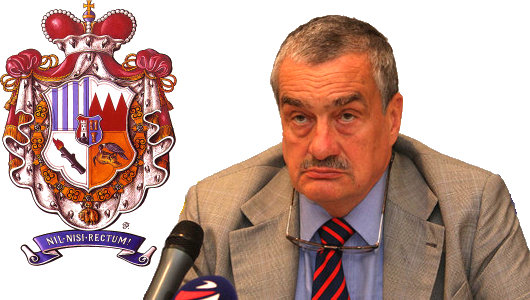
PRINCE KARL VII, current head of the House of Schwarzenberg and sometime foreign minister of the Czech Republic, recently combined with other political colleagues to form a new party in time for the upcoming parliamentary elections in Bohemia. A number of supporters of the Christian & Democratic Union – Czechoslovak People’s Party (KDU-ČSL) were disappointed with the selection of the left-leaning Cyril Svoboda as party chairman, and have formed a new conservative group, Tradice Odpovědnost Prosperita 09 or “Tradition Responsibility Prosperity ’09″.
Prince Karl — or Karel Schwarzenberg as he is known for electoral purposes — suggests that Bohemian voters have grown disenchanted with the current choice of political parties on offer. “The results of the last elections – the worst were the election to the European Parliament, but even the national elections – show that the degree of support for political parties by Czech citizens is going steadily down,” the Prince told Radio Prague.
“People are evidently not content with the parties that are offered to them, and they are more and more fed up. I read this in the e-mails I get and letters, and hear it in pubs and wherever. And as we think that there is still a lot of work to be done in our country, we decided to offer at least some alternative. That’s it.” (more…)
A Sad Day in Pretoria
The Proclamation of the Republic and the End of the South African Monarchy
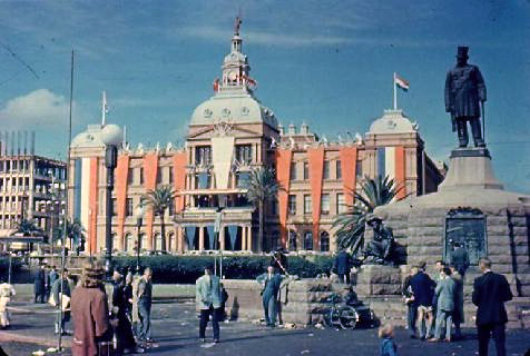
“For every monarchy overthrown, the sky becomes less brilliant, because it loses a star,” wrote Anatole France. “A republic is ugliness set free.” South Africa’s history betrays a long struggle between monarchy and republic, most typified in the horrendous Boer War between the British Empire and the two Afrikaner republics. Many of the Boers were shocked and surprised by the leniency of the British following their surrender to the forces of the Empire, given the brutality inflicted upon the Afrikaner people by the British during the war. Their old republics became colonies but were granted the right to rule themselves within just a few years of that bitter conflict’s end. In 1910, all four British colonies — the Cape, Natal, the Orange River Colony, and the Transvaal — were consolidated in the Union of South Africa, a self-governing dominion which became an independent kingdom after the Statue of Westminster was passed in 1931.
Yet Britain’s munificence towards the defeated people could not assuage the cold-hearted bitterness formed by their cruelty during the Boer War. The term “concentration camp” first arrived in the English language in South Africa, but it was the speakers of Dutch and Afrikaans who were interned in the camps and left without rudimentary medicine or food. The photos of the interned tell the tale better than any words. When the National Party won an outright majority of seats in the South African parliament in 1948, the republican-oriented party began a gradual process of loosening the country’s ties with Great Britain. Just a year later, the Citizenship Act was passed providing for South African citizenship apart from British subjecthood. Previously, any British subject living in South Africa would be considered ‘South African’ after two years of residence. Now, it would take five years of residence for a British subject to gain South African citizenship.
In 1950, the right of appeal to the Privy Council was abolished, and the Supreme Court in Bloemfontein became the court of last instance for the country. In 1957, that court asserted the sovereignty of the Parliament of South Africa (consisting of the Crown, Senate, and House of Assembly) in its ruling over the Collins v. Donges, Minister of the Interior case. That same year the Union Jack ceased to be an official national flag alongside the oranje-blanje-blou, and “Die Stem van Suid-Afrika” was given sole official status as the national anthem; thenceforth the Union Jack and “God Save the Queen” would only be used on specifically British or Commonwealth occasions. The old Royal Navy base at Simon’s Town, founded 1806, was handed over to the South African Navy, though the Royal Navy had continued use of it under a bilateral accord. The creeping republicanism manifested itself in smaller ways too, as with “OFFICIAL” replacing the designation “O.H.M.S.” (On Her Majesty’s Service) on government correspondence. (more…)
Over There
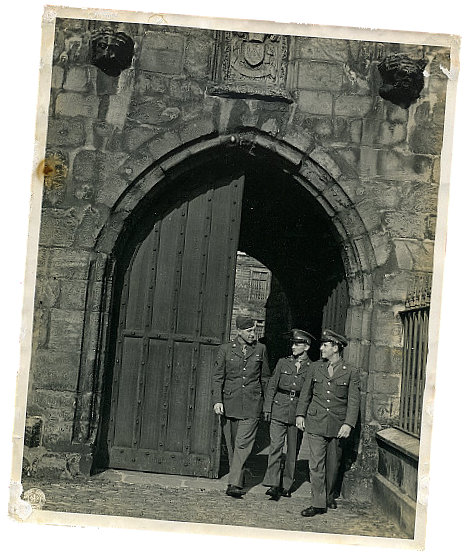
American GIs in St Andrews, 1943.
Die Wapenskild van die Universiteit

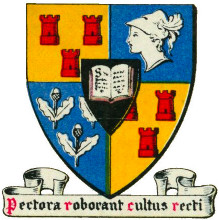 EDUCATION IN STELLENBOSCH began as early as 1685, but it wasn’t until 1866 that the Stellenbosch Gimnasium was founded. Like the (English-language) South African College in Cape Town, the Dutch/Afrikaans Gimnasium was a school covering secondary, and tertiary education. Twenty years after the foundation of the Gimnasium, it was renamed the Victoria Kollege in honour of the Queen’s jubilee of 1887. In 1918, the Parliament of South Africa finally reorganised education in the Cape, and separated both the South African College and the Victoria Kollege into their respective secondary and tertiary parts. SAC was divided into the University of Cape Town & the South African College Schools, while the Victoria Kollege was divided into the University of Stellenbosch & the Paul Roos Gymnasium.
EDUCATION IN STELLENBOSCH began as early as 1685, but it wasn’t until 1866 that the Stellenbosch Gimnasium was founded. Like the (English-language) South African College in Cape Town, the Dutch/Afrikaans Gimnasium was a school covering secondary, and tertiary education. Twenty years after the foundation of the Gimnasium, it was renamed the Victoria Kollege in honour of the Queen’s jubilee of 1887. In 1918, the Parliament of South Africa finally reorganised education in the Cape, and separated both the South African College and the Victoria Kollege into their respective secondary and tertiary parts. SAC was divided into the University of Cape Town & the South African College Schools, while the Victoria Kollege was divided into the University of Stellenbosch & the Paul Roos Gymnasium.
Along with gaining proper status as a university, the Universiteit van Stellenbosch also adopted a coat of arms in 1918. In the language of heraldry, the University’s coat of arms (or wapenskild in Afrikaans) is described as:
The “three towers gules” come from the arms of the town of Stellenbosch, and find their origin in the personal arms of Governor Simon van der Stel who founded the town in 1679. The quartering of yellow and blue (“or” and “azure”) was also inspired by van der Stel’s arms. Minerva symbolizes learning obviously, while the oak twigs represent the magnificent oak trees planted by Governor van der Stel, many of which still grace the streets of the town. The motto, Pectora roborant cultus recti, is Latin for “A sound education strengthens the spirit/character”.
Regrettably, the university tends to use its corporate logo of a stylised ‘S’ and oak leaf instead of its splendid heraldic achievement. The arms of the university can nonetheless be found around the town, displayed architecturally on numerous university buildings, in official university publications, on student clothing, and of course on the university tie.
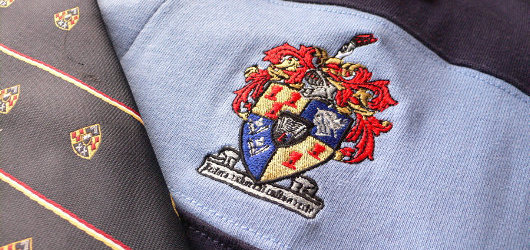
Die Joodse nuwejaarsdag
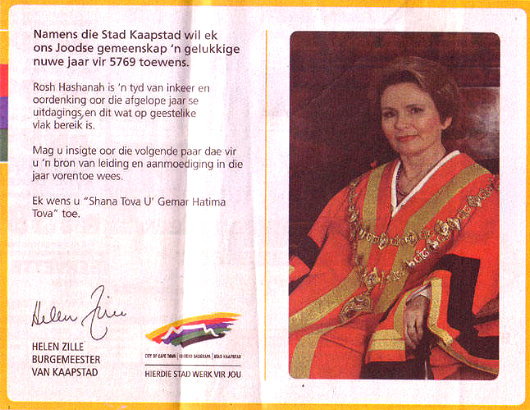
Helen Zille looks bizarrely young in her official Rosh Hashanah greeting of 5769 (which is to say, last year).
Thérèse Takes Britain by Storm
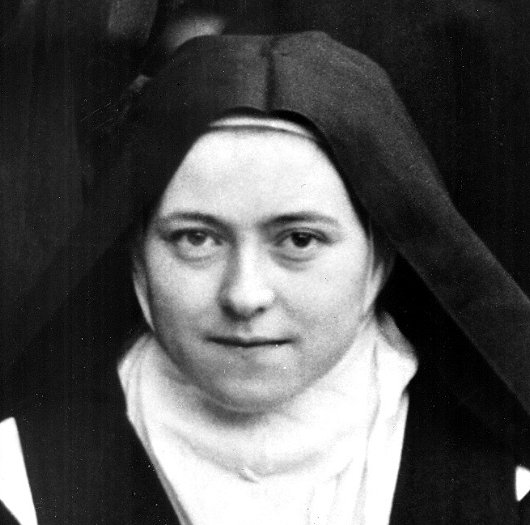
Relics of St Thérèse of Lisieux arrive in Britain for tour
The Guardian: Thousands wait at Portsmouth cathedral to see remains of St Thérèse
The Catholic Herald: The greatest saint of modern times
Thérèse of Lisieux portal
The Daily Telegraph: Relics of Carmelite nun St Thérèse on tour
St Thérèse of Liseux: who was she?
The relics and bones that bring us closer to God
BBC News: Saint’s remains arrive for tour
Reuters: Saint’s relics heading for Wormwood Scrubs
The Independent: Why are the relics of St Thérèse such a holy hit?
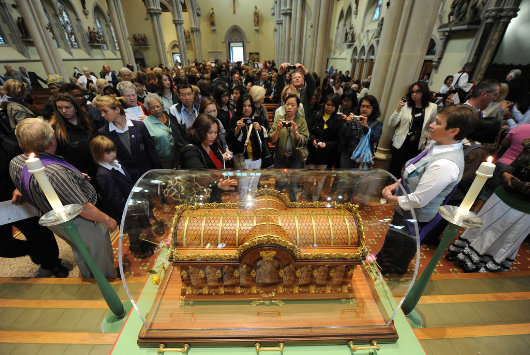
catholicrelics.co.uk
pray for us!
The Emperor in British Columbia
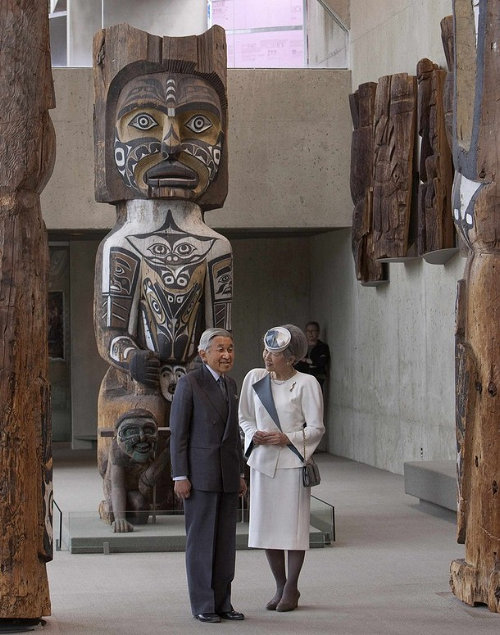
The Emperor & Empress of Japan in the Museum of Anthropology in Vancouver, on a recent visit to British Columbia.
Leve de Koningin!
“Hoera! Hoera! Hoera!” — The Third Tuesday in September Beholds the State Opening of the States-General of the Netherlands
Previously: Prinsjesdag
Bloubergstrand
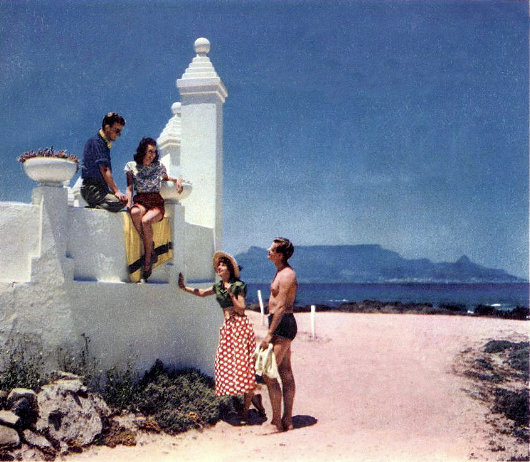
Bloubergstrand in the 1950’s, with a view towards Table Mountain in the distance.
St. Nicholas of the Seven Seas
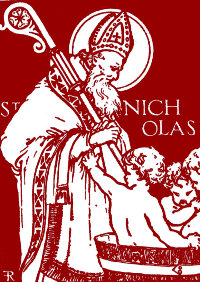 ONE OF OUR correspondents sends word that Russia is to name the fourth of her Borei-class ballistic missile submarines Николай Чудотворец, which is to say “Saint Nicholas”. The Borei-class vessels are the first series of Russian strategic submarines to be launched in the post-Soviet era. The previous subs in the class have been named the Yuri Dolgoruki (after Prince Yuri I, founder of Moscow), the Alexander Nevsky (after the Grand Prince of Vladimir & Novgorod venerated as a saint in the Eastern churches), and the Vladimir Monomakh (after the Grand Prince of Kievan Rus). The Saint Nicholas is of course not the first boat or ship to bear the name of New York’s patron saint. There was HMS St. Nicholas as well as a Spanish naval ship San Nicolas in the 1790s, eventually captured by the Royal Navy and commissioned as HMS San Nicolas. A Sealink (later Stena) ferry named St. Nicholas traversed the Harwich/Hook-of-Holland route from 1983 until it was renamed Stena Normandy in 1991 and transferred to the Southampton/Cherbourg route. Numerous merchant vessels took the saint’s name and patronage throughout the nineteenth century.
ONE OF OUR correspondents sends word that Russia is to name the fourth of her Borei-class ballistic missile submarines Николай Чудотворец, which is to say “Saint Nicholas”. The Borei-class vessels are the first series of Russian strategic submarines to be launched in the post-Soviet era. The previous subs in the class have been named the Yuri Dolgoruki (after Prince Yuri I, founder of Moscow), the Alexander Nevsky (after the Grand Prince of Vladimir & Novgorod venerated as a saint in the Eastern churches), and the Vladimir Monomakh (after the Grand Prince of Kievan Rus). The Saint Nicholas is of course not the first boat or ship to bear the name of New York’s patron saint. There was HMS St. Nicholas as well as a Spanish naval ship San Nicolas in the 1790s, eventually captured by the Royal Navy and commissioned as HMS San Nicolas. A Sealink (later Stena) ferry named St. Nicholas traversed the Harwich/Hook-of-Holland route from 1983 until it was renamed Stena Normandy in 1991 and transferred to the Southampton/Cherbourg route. Numerous merchant vessels took the saint’s name and patronage throughout the nineteenth century.
Diary
I have been spending the past few days in a flat at the corner of Holland Park Avenue and Portland Road, in this verdant corner of the capital. The flat is clean, capacious, and handsome, but terribly modern. Indeed, it is so modern that it will soon be old; it will not exhibit the old age of the time-honoured and true, but rather the tawdry oldness of what had only recently been new. Pedantic students of interior design will study photos of it and discern “2008 I’d say… no! 2009!” But for now, it is still new, still fresh, and so, like a tomato fresh for the plucking, we will enjoy it while its moment is precisely appropriate.
Until now, I hadn’t much knowledge of this part of London, but find it a happy place to be in August. The weather has been mild and kind, and I spent part of the afternoon reading de Maistre — the St. Petersburg Dialogues — in the formal garden in Holland Park. The avenue itself is tree-lined, or rather tree-engulfed, such is the plentiful shade, and has a small selection of cafés: the Paul boulangerie which is becoming omnipresent, and the Valerie patisserie, both chains. Cyrano, at No. 108 Holland Park Avenue, is much preferred, and I decamped there for a light breakfast with a copy of the Scotsman from the local newsstand (the one on Ladbroke Grove, rather than the smaller one by the tube stop) while avoiding the miserable Irish cleaning lady who returns the modern flat to its pristine whiteness every Thursday morning.
Then to the Royal Academy, for the Waterhouse show. What an interesting artist! His earlier works so precise in detail and, for lack of a better word, academic. Yet in his later pieces, you can find a certain willingness to obfuscate, perhaps an admission that reality is not quite so precise and that the most accurate portrayal of reality requires a few lines to be blurred. Faces, and indeed all forms, remain clear throughout, but the architectural coldness of the earlier works on display gradually evolves to a more fluid depiction of Greek mythos and Keatsian tales. Waterhouse can vary in his details from the almost photographic to verging on impressionism in a single painting. Was that his intention? It was certainly the result.
My viewing companion — an old university friend — and I agreed that throughout all the themes portrayed by the artist one can’t help but feel an overwhelming Victorian-ness. Is this ex post facto because we know Waterhouse to be an High Victorian artist, or is there actually some inherent quality in the works that calls to mind that era? Very difficult to say, but those in London should not miss this exhibition of a popular yet under-appreciated artist — the Jack Vettriano of his day.
Who is in London in August anyhow? The text messages sent out, and their replies promptly received. “I’m in Geneva! Will be in Luxembourg next week if you’re on the continent.” I am not and will not be on the continent. “I have been unexpectedly called to Africa.” Well I’ve just come from there, though not the Sudan thank God. “You’re welcome to come to Gozo between the 5th and 15th for a pleasant, quiet holiday.” I will have returned to New York by then, alas. “Am up north in Lancashire; you’re welcome to come and visit, sample our recusant history!” Just haven’t got the time, alas.
But while many have escaped for the month, many yet remain. An afternoon drink at Rafe’s, with Fr. Rupert and Alex Williams. The Carlton is being refitted, so it was drinks at the East India Club instead with another university friend, during which we concur that office jobs are the absolute pits and we should have studied agriculture with the country girls at Cirencester rather than getting tawdry MAs in Scotland. There is no greater affirmation of the consequences of original sin than the omnipresence of the 9-to-5 office job.
Astute observers of this little corner of the web (if indeed we can use the plural for such a subset of the earth’s population) will recall an incident over two years ago now in which a certain Jack Russell terrier became rather more involved with my lower leg than I had envisioned was ideal. The dog, which goes by the name of Cicio Stinkiman, had noticed me playing with the only seeing-eye-dog in Scotland that knows how to genuflect and resented the attention I was paying to the bitch, to whom he obviously professed some attachment, ran up, and bit me in the calf.
You can imagine my surprise when I learnt that the beast in question is actually now not only living in London but actually residing in the Oratory. Indeed I saw the beast from a distance while waiting on Brompton Road for the Friday evening mass last week. His owner graduated from university (in Scotland, like all the wisest people) two years ago now but his mother banned poor Cicio Stinkiman from the German palace he might otherwise call home, perhaps informed along the voluptuous grapevines of Europe of the horrendous incident in which the beast had taken an unwelcome interest in my lower leg.
I am being far too unfair to poor Cicio, for he did apologise, and looked up at me with terribly apologetic eyes. Admittedly, that might’ve been because his master stood nearby holding a rolled-up copy of the Catholic Herald most threateningly. Still, pity the poor ignorant beasts. They have no conscience, and thus no real malice. Only we humans, with the freedom we abuse so easily, can claim that dubious achievement.
Good to be back
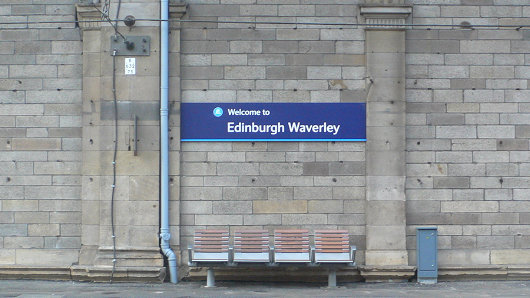
Sad to leave it. (I’m in London now).
From the Number 23 Bus
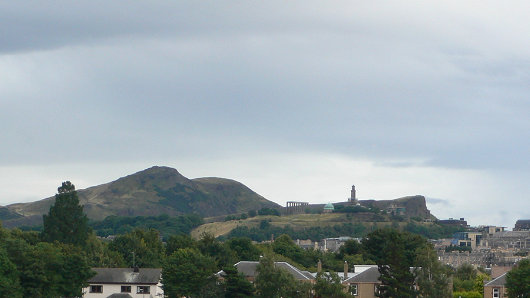
A view of Edinburgh from the top of the no. 23 bus. (more…)
Search
Instagram: @andcusack
Click here for my Instagram photos.Most Recent Posts
- Amsterdam November 26, 2024
- Silver Jubilee November 21, 2024
- Articles of Note: 11 November 2024 November 11, 2024
- Why do you read? November 5, 2024
- India November 4, 2024
Most Recent Comments
- on The Catholic Apostolic Church, Edinburgh
- on Articles of Note: 11 November 2024
- on Articles of Note: 11 November 2024
- on Why do you read?
- on Why do you read?
- on University Nicknames in South Africa
- on The Situation at St Andrews
- on An Aldermanian Skyscraper
- on Equality
- on Rough Notes of Kinderhook
Book Wishlist
Monthly Archives
Categories

